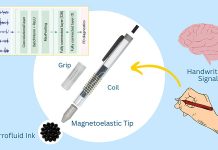
Strokes are serious medical emergencies that can have life-altering consequences.
Understanding the different types of strokes can help in recognizing their signs early and improving outcomes through timely treatment.
This review explains the various types of strokes, their causes, and their effects, using straightforward language and evidence from recent research.
Strokes occur when the blood supply to the brain is interrupted or reduced, preventing the brain tissue from getting oxygen and nutrients. This can happen in two main ways, leading to two primary types of strokes: ischemic and hemorrhagic.
Ischemic strokes are the most common, accounting for about 87% of all strokes. They occur when a blood clot blocks or narrows an artery leading to the brain, causing reduced blood flow.
The clots can develop directly in the brain arteries or can travel there from another part of the body. Research has linked ischemic strokes to conditions like heart disease, diabetes, high cholesterol, and high blood pressure, which can all contribute to the formation of clots.
Hemorrhagic stroke happens when a blood vessel in the brain bursts, leading to bleeding (hemorrhage) in or around the brain. Hemorrhagic strokes can be caused by conditions such as high blood pressure, aneurysms, arteriovenous malformations, or head injury.
While less common than ischemic strokes, hemorrhagic strokes are often more severe and have a higher risk of mortality.
A third, less severe type of stroke is a transient ischemic attack (TIA), often called a mini-stroke. TIAs are short-term, temporary interruptions of blood flow to the brain.
While the symptoms may last only a few minutes and there’s no permanent damage, TIAs are critical warnings and predictors of future strokes.
Studies suggest that about a third of people who have a TIA will eventually have a more severe stroke, with half of these occurring within a year after the TIA.
Understanding the signs of stroke can save lives and improve recovery by getting treatment as quickly as possible. The FAST test is an easy way to remember the sudden signs of stroke: Face drooping, Arm weakness, Speech difficulties, and Time to call emergency services.
These symptoms are similar across different types of strokes, making it crucial to act immediately when they appear.
Research also emphasizes the importance of prevention and early treatment. For ischemic strokes, treatments focus on quickly dissolving the clot using medication like alteplase, or mechanically removing it through an endovascular procedure.
For hemorrhagic strokes, controlling the bleeding and reducing the pressure in the brain are the initial steps, sometimes requiring surgery.
Preventive measures include managing key risk factors such as controlling high blood pressure, quitting smoking, maintaining a healthy weight, and regular exercise.
Additionally, keeping conditions like diabetes and atrial fibrillation under control can reduce the risk of stroke.
In conclusion, strokes are complex with various types that require different treatments. Awareness and understanding of these differences are key to managing risks and improving outcomes.
Whether ischemic, hemorrhagic, or a TIA, recognizing the signs of stroke and acting FAST can make a significant difference. Regular medical check-ups and managing health conditions are also critical in preventing the devastating impact of strokes.
If you care about stroke, please read studies that diets high in flavonoids could help reduce stroke risk, and MIND diet could slow down cognitive decline after stroke.
For more health information, please see recent studies about antioxidants that could help reduce the risk of dementia, and tea and coffee may help lower your risk of stroke, dementia.
Copyright © 2024 Knowridge Science Report. All rights reserved.



